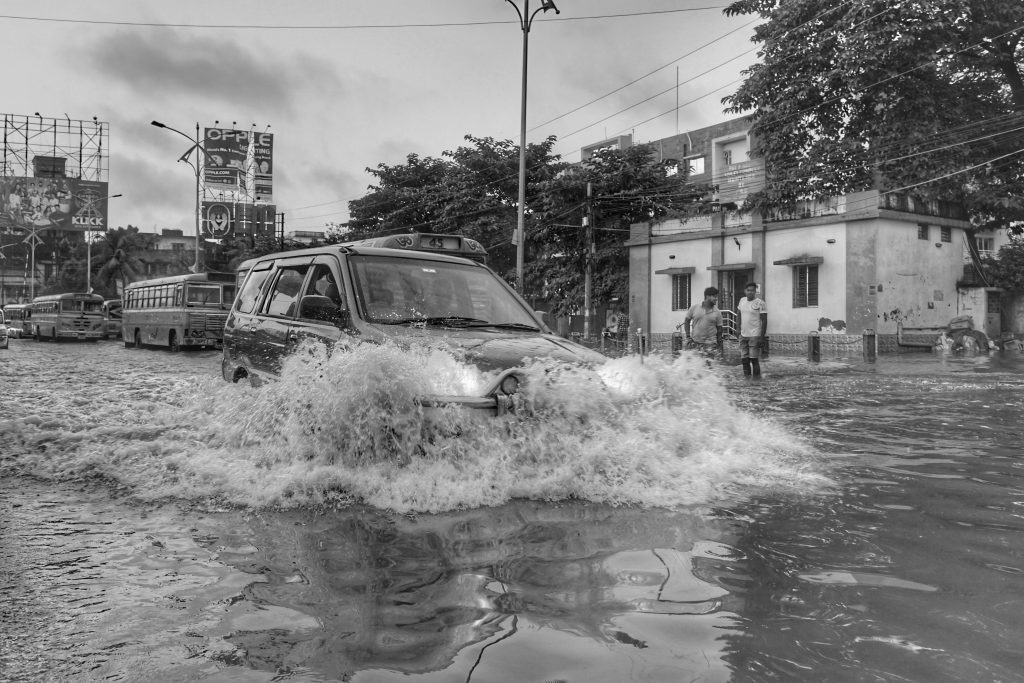
Signs of Aquaplaning and How to Respond Safely
Introduction
Driving in wet conditions carries unique hazards, and one of the most dangerous is aquaplaning (also known as hydroplaning). This phenomenon occurs when a layer of water builds between your vehicle’s tires and the road surface, causing a complete or partial loss of traction. At speeds as low as 45 mph in heavy rain, your tires may not channel water away quickly enough, and your car can begin to glide uncontrollably on that thin film of water. Left unrecognized and improperly handled, aquaplaning can lead to overcorrection, skidding, or collisions. However, by understanding the early warning signs, immediate corrective actions, and long-term preventive measures, you can navigate wet roads with confidence and minimize risk.

In this in-depth guide, we’ll explore:
- The mechanics of aquaplaning
- Environmental and vehicular risk factors
- Acute signs you’re losing traction
- Step-by-step techniques to regain control
- Advanced responses for ABS and non-ABS vehicles
- Preventive maintenance and driving habits
- FAQs and real-world scenarios
1. The Mechanics of Aquaplaning
1.1 What Exactly Is Aquaplaning?
Aquaplaning happens when your tire’s tread pattern cannot expel water fast enough from beneath the tire footprint. Instead of the rubber making direct contact with the asphalt, the tire rides atop a thin water layer. Without that solid contact patch, steering, braking, and acceleration inputs become ineffective.
- Hydroplaning: High-speed aquaplaning on deep water.
- Tire aquaplaning: Partial loss of grip when only sections of the tire lose contact.
1.2 Physics Behind the Phenomenon
- Water pressure buildup: As speed increases, the water pressure at the leading edge of the tire can exceed the downward force of the vehicle, lifting the tire off the road.
- Tread’s role: Treads channel water through grooves; worn or narrow treads reduce this capacity.
- Critical speed formula (approximate): Vcritical(mph)≈10.35×Tdepth(inches)V_{\text{critical}} (\text{mph}) \approx 10.35 \times \sqrt{T_{\text{depth}} (\text{inches})}Vcritical(mph)≈10.35×Tdepth(inches) A tire with 0.08″ tread depth may hydroplane at just over 29 mph.
2. Environmental and Vehicle Factors
2.1 Road Conditions
- Standing water depth: Just 0.1″ (2.5 mm) can cause aquaplaning at 35 mph; deeper water lowers the threshold speed.
- Road texture: Smooth asphalt or concrete surfaces shed water less effectively than grooved textures.
- Oil film “first flush”: After dry spells, roads accumulate oil and grease; the initial rainfall mixes these into a slick surface.
2.2 Weather Variables
- Heavy rainfall intensity: Rapid accumulation overwhelms drainage systems.
- Temperature extremes: Cold weather can freeze standing water into black ice; hot weather can create spontaneous puddles under bridges.
- Wind-driven spray: Can obscure visibility and deposit water unevenly.
2.3 Vehicle-Specific Factors
- Tire tread depth and design: Deeper, wider circumferential grooves and lateral sipes disperse water more efficiently.
- Tire pressure: Underinflation reduces the tire’s ability to cut through water; overinflation reduces footprint, increasing pressure and potential for lift.
- Vehicle weight and load distribution: Heavier vehicles have greater downward force, raising aquaplaning speeds slightly, but uneven loads can cause one axle to aquaplane while another maintains grip.
- Suspension condition: Worn shocks allow rapid weight transfer, reducing the effective contact patch during steering or braking.
3. Key Signs of Impending Aquaplaning
Recognizing aquaplaning early gives you precious seconds to react. Watch for:

3.1 Light or “Floaty” Steering
- Description: Steering inputs feel disconnected; the wheel turns, but the car continues straight.
- Why it matters: A slipping contact patch means directional control is compromised.
3.2 Rising Engine RPM Without Speed Increase
- Description: You press the accelerator, the engine revs climb, but the speedometer remains static.
- Why it matters: The tires are spinning on water rather than gripping asphalt.
3.3 Audible Hissing or Roaring Noise
- Description: A faint “sshhh” or whooshing sound as water is forced through the treads.
- Why it matters: Indicates high-pressure water flow under the tire.
3.4 Involuntary ABS Activation
- Description: Anti-lock brakes engage absent any hard braking or locked wheels.
- Why it matters: The system senses sudden loss of traction and modulates brake pressure.
3.5 Unexpected Lightness or “Floating” Sensation
- Description: The car feels as if it’s riding on a cushion, similar to ice.
- Why it matters: Confirms partial or full loss of friction.
4. Immediate Response: Regaining Control
When aquaplaning begins, follow these steps in order:
4.1 Ease Off the Accelerator
- Goal: Reduce speed gently without sudden inputs that could destabilize the car.
- How: Lift your right foot smoothly off the gas pedal; do not stomp the brake.
4.2 Keep the Steering Wheel Straight
- Goal: Avoid sudden steering movements that could lead to a spin once traction returns.
- How: Hold the wheel at 9 and 3 o’clock; resist the urge to jerk the wheel.
4.3 Wait for Tires to Re-Engage
- Goal: Let speed bleed off until the tread can recontact the road.
- How: Observe the steering wheel’s weight gradually returning; traction feedback will reappear.
4.4 Gentle Braking Once Grip Returns
- Goal: Slow further as needed without locking wheels.
- How: If equipped with ABS, a firm but steady brake is modulated automatically; otherwise, apply light, steady pressure.
5. Advanced Recovery: ABS vs. Non-ABS Vehicles
5.1 Vehicles with ABS
- Do: Maintain gentle, continuous pressure on the brake pedal.
- Don’t: Pump the brakes manually—ABS does this faster and more effectively.
5.2 Vehicles without ABS
- Technique:
- Threshold braking: Apply firm pressure up to the point just before wheel lockup.
- Rapid release: If wheels lock, release slightly to restore rotation, then reapply.
- Repeat as necessary, keeping releases brief to maintain momentum.
6. Regain Situational Awareness
Once traction is restored:

- Scan Ahead: Look for the driest line—often along the centerline rumble strips or oily film-free zones.
- Reduce Speed: Drop by 10–15 mph below the posted limit until conditions improve.
- Increase Following Distance: Adopt a 5–6 second rule in wet conditions versus 3 seconds in dry.
7. Preventive Maintenance and Habits
7.1 Tire Care
- Monitor tread depth: Replace tires before they dip below 4/32″ in wet climates.
- Maintain correct pressures: Adjust for temperature changes—check weekly.
- Choose quality tires: All-season or dedicated wet-weather tires have specialized siping and compounds.
7.2 Vehicle Inspection
- Suspension and alignment: Worn shocks or misaligned wheels reduce contact patch stability.
- Brake system: Ensure ABS functionality and brake-pad condition for timely engagements.
7.3 Driving Techniques
- Slow down early: Reduce speed aggressively as rain intensity increases.
- Avoid puddles: Slow or steer around areas of standing water when safe.
- Use cruise control with caution: In heavy rain, avoid cruise control; it can delay your reaction to traction changes.
8. Integrating Aquaplaning Awareness into Your Driving
8.1 Pre-Trip Planning
- Check weather forecasts and road-condition reports.
- If heavy rain is predicted, consider delaying non-essential trips.
8.2 Adaptive Driving
- In heavy rain, drive in the tire tracks of vehicles ahead (with extra buffer) to find slightly drier pavement.
- Use low-beam headlights to improve visibility and make your vehicle more visible to others.
8.3 Emergency Preparedness
- Keep an emergency kit with high-visibility vest, flares, and a charged phone in case you must stop.
- Know local rest stops or safe pull-off areas if conditions worsen.
9. Real-World Scenarios and Case Studies
9.1 Highway Aquaplaning
Scenario: A driver at 60 mph on a rain-slicked interstate loses steering response.
Response: Eases off throttle, maintains straight wheel, allows speed to drop to 40 mph, gently applies ABS brakes.

9.2 Urban Puddle Hazard
Scenario: Deep water pooling at an intersection causes sudden tire lift.
Response: Driver lifts off gas, holds wheel straight, then steers carefully into the shallower gutter.
9.3 Mountain Pass with Spray
Scenario: Windblown spray on a mountain descent reduces visibility and wets the road.
Response: Switches off cruise control, engages low gear engine braking, increases following distance, and performs mindful aquaplane recovery if needed.
10. Conclusion
Aquaplaning poses a serious threat whenever roads are wet, but with vigilance, vehicle upkeep, and practiced reactions, you can manage and mitigate the risk. Recognize the early signs—light steering, rising RPMs, floating sensation—and respond by easing off the accelerator, holding the wheel straight, and letting speed bleed off until traction returns. Follow up with gentle braking, scan for drier lanes, and adjust your driving habits and maintenance routine to prevent recurrence. By integrating these strategies, you’ll navigate rainy conditions with greater confidence and safety, ensuring that wet roads remain a challenge you can handle rather than a hazard that overwhelms.



